Assets

Exchange

Buy Crypto



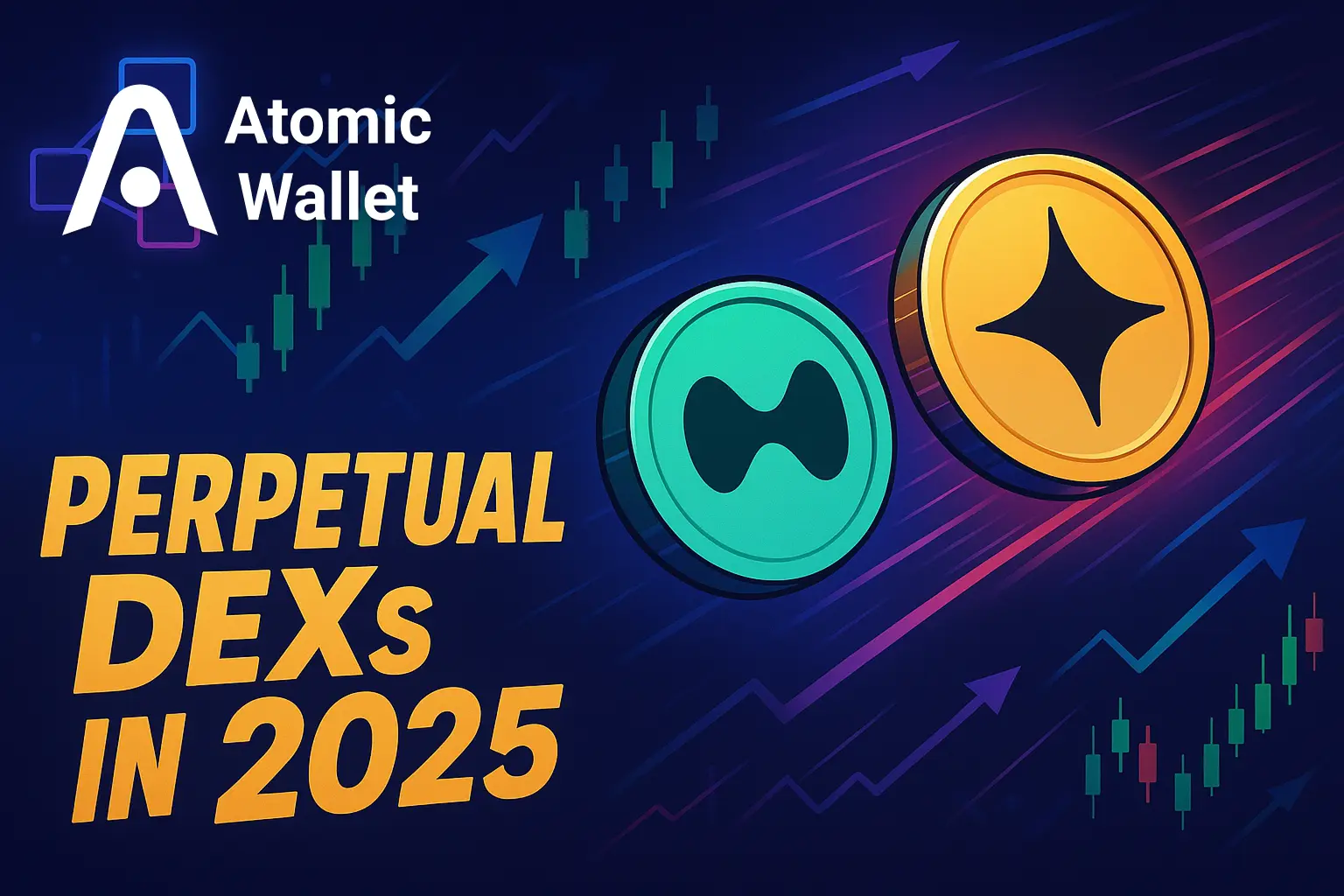
Perpetual decentralized exchange markets have metamorphosed in 2025; by September, daily trading volume hit $96.973 billion. Monthly turnover shot up to nearly $1.064 trillion. Such elevation corresponds to breakthroughs in speed of execution, the greater demand for decentralized finance, and the tighter regulation placed upon centralized venues.
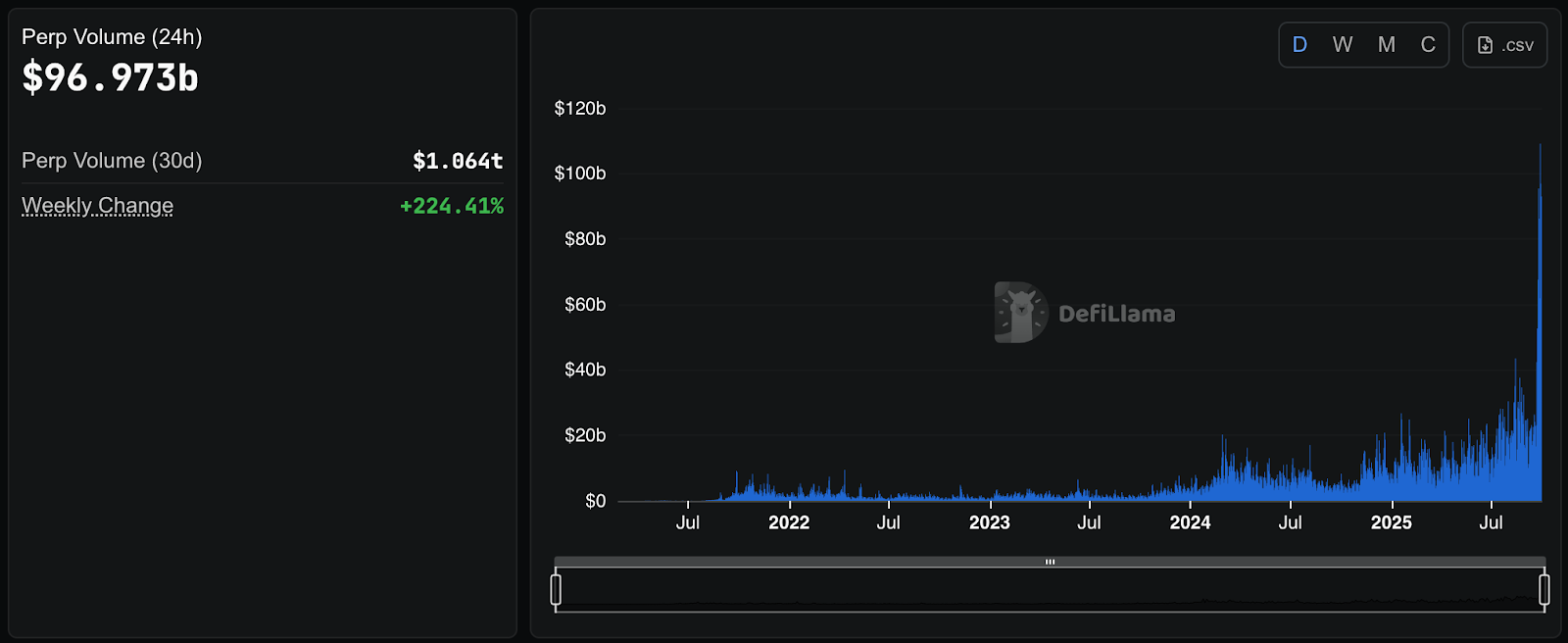
Source: DefiLlama
Perpetual DEXs now command a 26% share of the crypto-derivatives market; whereas merely a year ago, the number was still in single digits. Such a change indicates that decentralized infrastructure is grasping what was almost entirely considered the playground of centralized exchanges.
Different execution designs shape the market. Order book platforms such as Hyperliquid and dYdX cater to professional traders with deep liquidity and precise price discovery. AMM-based exchanges, including GMX and Gains Network, attract retail flow with instant liquidity and simple interfaces. Hybrid designs are also entering the space. Jupiter Perps, for example, routes between an order book and AMM through a keeper system, giving users the advantages of both.
Aster, created through the merger of APX Finance and Astherus, rose quickly by combining multi-chain access with CEX-like onboarding. The protocol has backing linked to YZi Labs and is associated with community support from CZ. On launch day, September 17, Aster’s token price jumped 1,650 percent. First-day volume reached $3.71 billion. Wallet growth exceeded 330,000.
Aster focuses on user-side features. Its “Simple Mode” allows leverage up to 1001x, well above the 40–50x range typically seen on Hyperliquid. While risky, it appeals to speculators aiming for high returns. Aster also introduced hidden orders, inspired by dark pools in traditional finance. This protects large trades from MEV attacks. In addition, the yield-collateral feature lets traders use assets like asBNB to earn a 5–7 percent base yield while trading.
Capital growth has been rapid. Total value locked expanded from $370 million on September 14 to $17.35 billion by late September. Around 80 percent of these funds originated from BNB Chain. On several days, daily trading volume topped $20 billion, surpassing Hyperliquid. Fee revenue reached $7.12 million in one 24-hour period. Cumulative perpetual trading volume rose to $19.383 billion in just a few months.
Community sentiment shows a divide. Professional traders lean toward Hyperliquid, citing the importance of one-block confirmation and consistent spreads. Cross-chain users and newcomers often prefer Aster. Its no-bridge deposits and familiar interface reduce barriers for those transitioning from centralized exchanges.
Hyperliquid set a high bar for on-chain performance with its HyperCore engine. Reported throughput exceeds 200,000 orders per second with latency near 0.2 seconds. Cumulative perpetual trading volume has crossed $2.765 trillion. Current open interest sits around $133.5 billion. Daily volumes remain near $15.6 billion.
Despite strong performance, market share has declined. From about 71 percent in May 2025 and 80 percent in August, Hyperliquid now holds close to 38 percent. Aster’s rapid rise and the appearance of incentive-driven rivals have chipped away at dominance once considered secure.
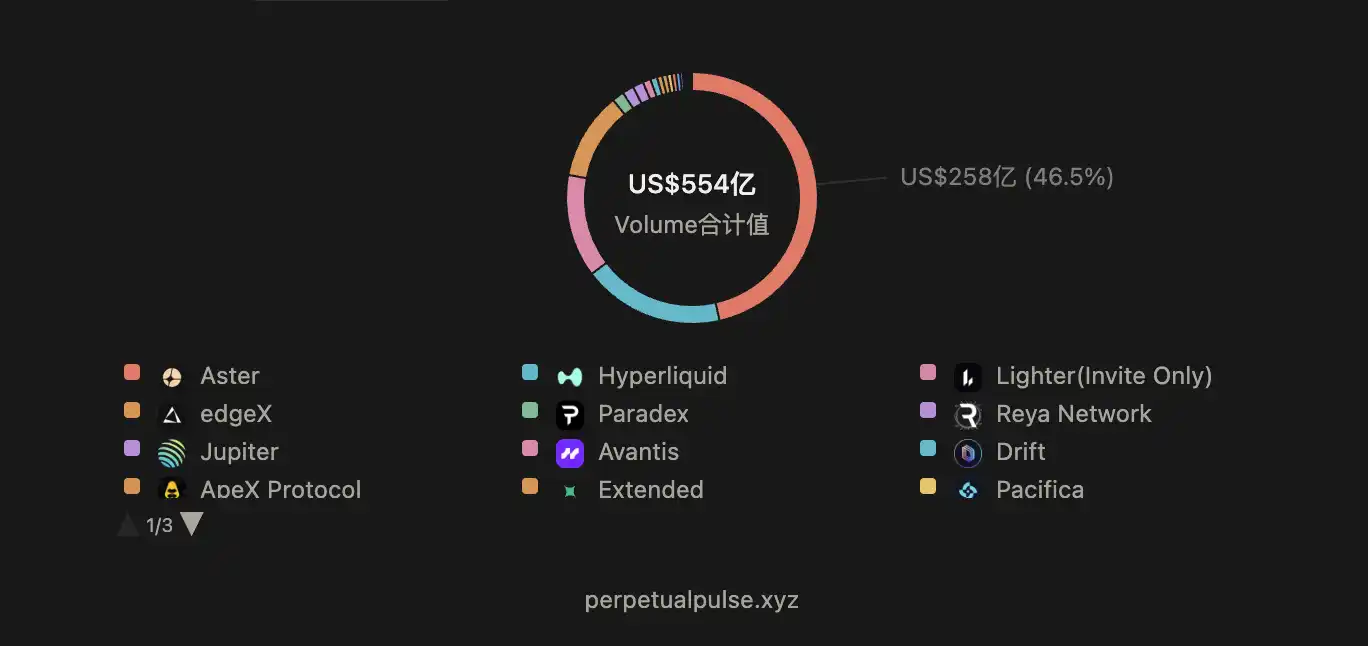
Liquidity strength: spreads on BTC and ETH pairs are often close to 0.1-0.2 basis points; thus, one-block confirmation assures certainty in volatile conditions. More than 100 applications now stand on the shoulders of Hyperliquid, spanning staking, lending, yield, and mobile gateways. The revenue model balances token demand, where 99 percent of fees go for HYPE buybacks and burns. Revenue to the protocol is projected to be at an excess of $20 billion annually, which is being used in this burn function.
User activity supports flow quality. Active addresses on a daily basis are near 825K, whereas monthly ones are 3.65M. Open Interest to Volume sits at 287%, that is infinitely above the normal rating of the industry. Such a ratio communicates that traders use Hyperliquid for essential hedging and placing at longer-term. Conversely, with Aster showing an approximate 12 percent rating, this implies heightened trading turnover and selfish short-term speculation.
Hyperliquid is adjusting its roadmap. HIP-3, the Permissionless Perpetual Market proposal, will allow anyone to deploy custom perpetual contracts. This could open paths to RWA contracts and AI hashrate futures. A native stablecoin, USDH, is also in development. It will circulate across HyperCore and HyperEVM, supported by U.S. Treasuries through partners such as Stripe Bridge and BlackRock. USDH is expected to manage around $5.5 billion, with 95 percent of profits used for HYPE buybacks.
An anchoring for liquidity staking is done by Kinetiq on Hyperliquid, with assets worth more than $17 billion under lock, at times making up most of the chain's TVL. Its StakeHub algorithmates validator rankings of reliability, security, governance, and performance while pushing in funds and pulling them out on a dynamic basis. Users stake HYPE to mint kHYPE, which trades at a discount to its issuance price. Unstaking is hedged by a seven-day delay and a nominal exit fee on the chain, thus balancing security and access.
The growth since has been through the roof. TVL shot up from $458 million in July to $1.81 billion in two months, more than tripling in size. A lot of this growth came after Pendle integrated kHYPE into its PT and YT framework, which birthed a slew of new ways to free up liquidity and engineer yield strategies. Together, these two protocols push demand for kHYPE and widen its range of functions in DeFi.

Source: DefiLlama
Yields are really competitive. Base staking returns are almost 2.3%. StakeHub incentives, MEV income, plus DeFi integrations probably pack total rewards into the 10-12% band. A governance token will be launched, KNTQ, with allocations for the community tied to their participation and staking activities.
Based24 is the top Builder application on Hyperliquid. Daily revenues reach $90,000, with $16.7 billion in cumulative trading. The platform uses a dual token model. PUP, launched in August, boosts XP accrual. BASED will govern, distributed by lifetime XP. Users onboard with email and one-click deposits. A Visa card program supplements trading features, though it is scheduled to deactivate later in 2025.
Pendle splits kHYPE into Principal and Yield tokens. This allows fixed-income strategies and yield speculation. HyperEVM deployment raised TVL to $12.3 billion with over 70 percent monthly growth. New markets include feUSD and beHYPE. Integration with Kinetiq lets users farm staking points while holding yield tokens.
HyperLend adapts Aave v3 to Hyperliquid’s environment. The HyperLoop feature enables one-click looped leverage using atomic flash loans. TVL sits around $512.68 million, with borrowing at $262.32 million and utilization near 48 percent. Flash-loan fees are 0.04 percent, below Aave’s 0.09 percent, attracting arbitrage activity. A points system runs ahead of the HPL governance token release.
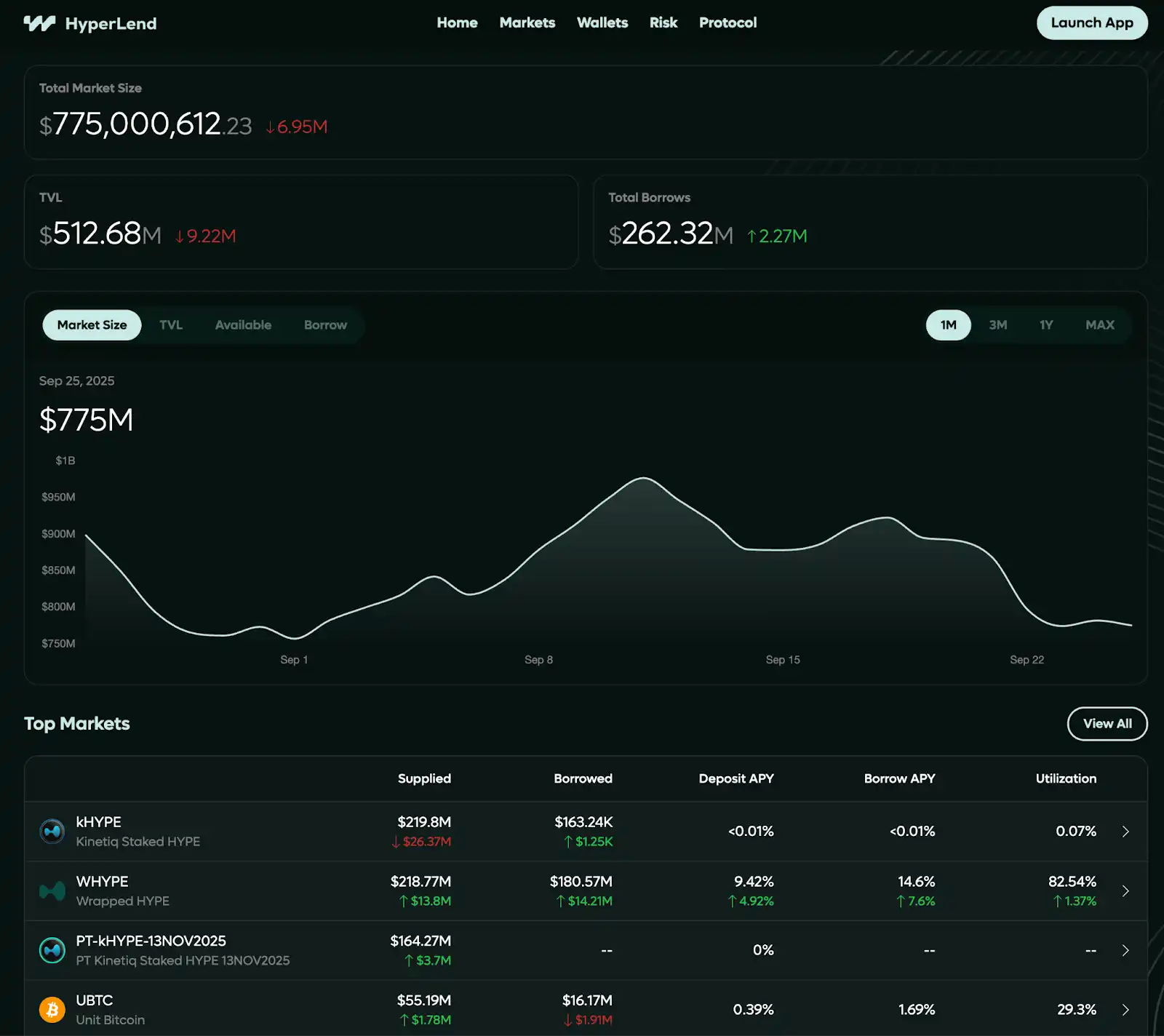
Hyperbeat provides staking, lending, and automated yield strategies. It raised $5.2 million from Electric Capital and Coinbase Ventures. TVL on Arbitrum exceeds $28 million. Its Meta-Yield optimizer reallocates capital to chase higher returns across protocols. A Hearts points campaign is nearing its conclusion, preparing for the BEAT token launch.
USDH will become Hyperliquid’s native settlement asset. Community votes granted issuance rights to Native Markets. Backed by U.S. Treasuries, it will flow across HyperCore and HyperEVM. Around $5.5 billion is expected to be managed. Ninety-five percent of revenue will support HYPE buybacks. Launch is targeted for late 2025.
Liquidity depth impacts trader experience. Hyperliquid continues to ensure tight spreads and fill consistency on majors, one-block confirmation providing execution certainty. High Open Interest (OI) to Volume ratios indicate the presence of longer-term hedges.
Aster onboards and pushes for speed. Multi-chain deposits and extreme leverage invite new retail flow. User activity tends toward rapid repositioning. Hidden order capabilities are useful for large traders to reduce MEV exposure.
The fee structures differ. Hyperliquid directs all of its revenues to HYPE token buyback and burn. A reflexive loop of token demand during volume comes into play here. Aster, instead, is focusing on incenting and yield-collateral structures for growth. One emphasizes depth and efficiency, the other access and growth.
Hyperliquid’s upcoming features could reshape its trajectory. HIP-3 opens permissionless perpetual contracts, enabling niche products. USDH will anchor margin and settlements. Both could stabilize its ecosystem and reclaim market share.
Aster’s challenge will be managing growth while maintaining liquidity. Its model is attractive for rapid adoption, but sustainability depends on depth and risk controls.
Beyond these two, airdrop campaigns add complexity. Lighter, backed by a16z, has surpassed $7 billion in daily volume with zero-fee trading. Paradex, with backing from Paradigm and Jump, distributes millions of XP weekly. Pacifica, still in beta on Solana, already ranks in the global top ten by volume. Traders often rotate across these platforms chasing points, which influences daily market share.
Perpetual futures involve risk. Traders should fund wallets, confirm margin requirements, and size positions carefully. Funding rates and liquidation thresholds must be monitored closely. Testing with small size first is recommended.
Atomic Wallet supports the first step. Traders can buy and store Ethereum and Solana directly. Assets can be swapped within the wallet before moving to exchanges. After closing positions, profits can be returned to self-custody for safety.
Perpetual DEXs now account for more than a quarter of derivatives activity. Hyperliquid remains the leader in liquidity, execution, and ecosystem depth. Its deflationary token model and upcoming HIP-3 and USDH launches could strengthen its position. Aster, however, has achieved one of the fastest rises in DeFi history. Its cross-chain deposits, high leverage, and yield-collateral loop have drawn billions within weeks.
The competition highlights two paths: deep, engineered liquidity versus rapid, accessible growth. Both approaches are reshaping decentralized derivatives trading.
1. What is a perpetual futures contract?
A perpetual contract is a leveraged derivative without an expiry date. Funding keeps prices close to spot.
2. Which DEX fits professional traders?
Order book platforms such as Hyperliquid and dYdX provide deep books and precise control.
3. Is Aster more suited for new users?
Yes. Aster’s multi-chain access and familiar interface lower barriers, but leverage risk remains high.
4. Where is the highest leverage available?
Aster allows up to 1001x leverage in Simple Mode, though such levels are highly risky.
5. How do funding payments work?
When perps trade above spot, longs pay shorts. When below, shorts pay longs.
6. Which wallets can connect to perp DEXs?
Most support EVM or Solana wallets. Atomic Wallet can store ETH and SOL for deposits.
7. What role do native stablecoins play?
USDH on Hyperliquid will streamline margin and settlement across its ecosystem.
8. Do perp DEXs still run airdrops?
Yes. Some reward trading points that convert to tokens during distribution events.
9. How can traders compare fees?
Maker and taker fees, funding, borrowing, and slippage should all be considered.
10. What is a safe way to start?
Begin with small trades, track funding, and use strict stop levels. Keep funds in self-custody.
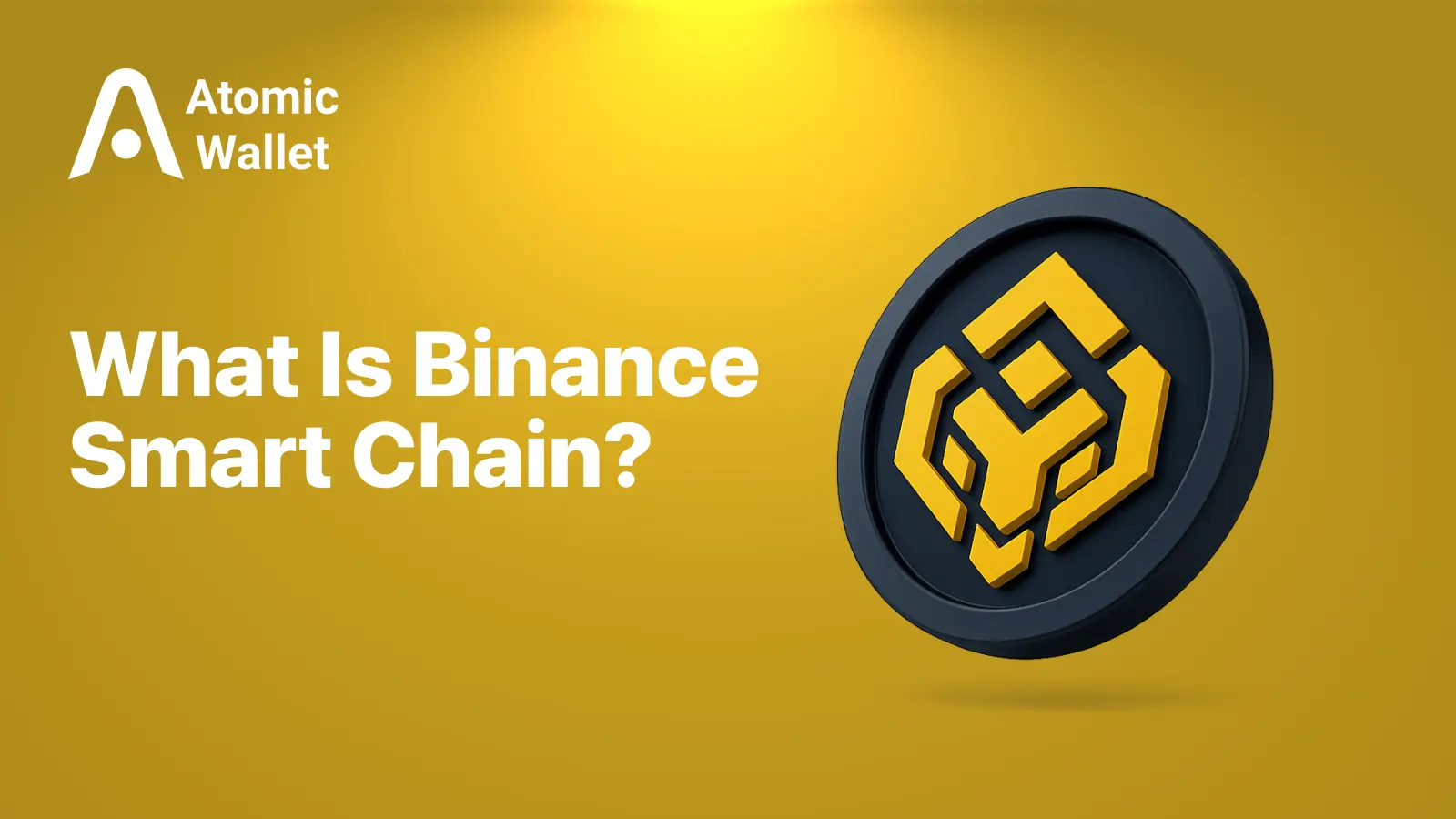
Learn what Binance Smart Chain (BSC) is, how it works, and why it remains one of the fastest, most affordable, and widely used blockchains in crypto.